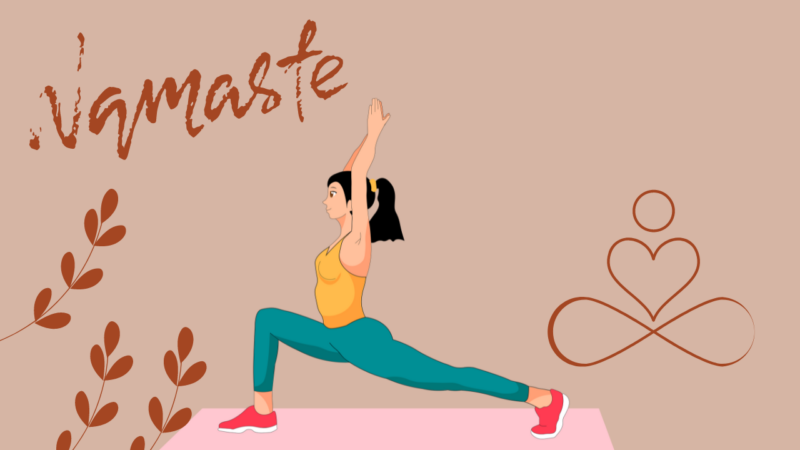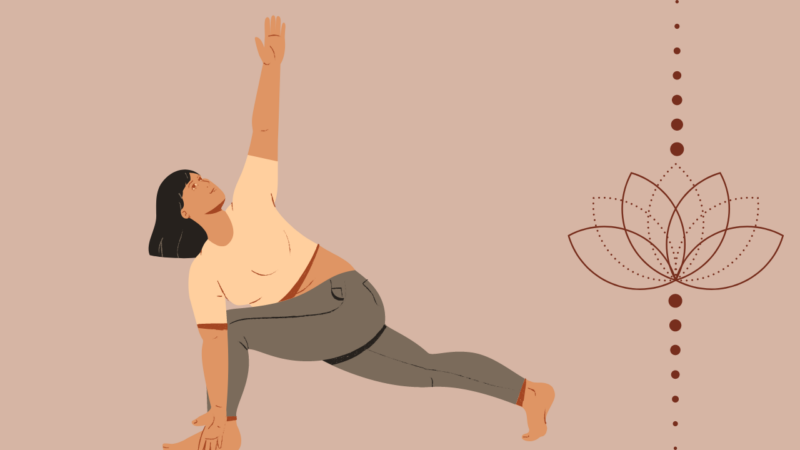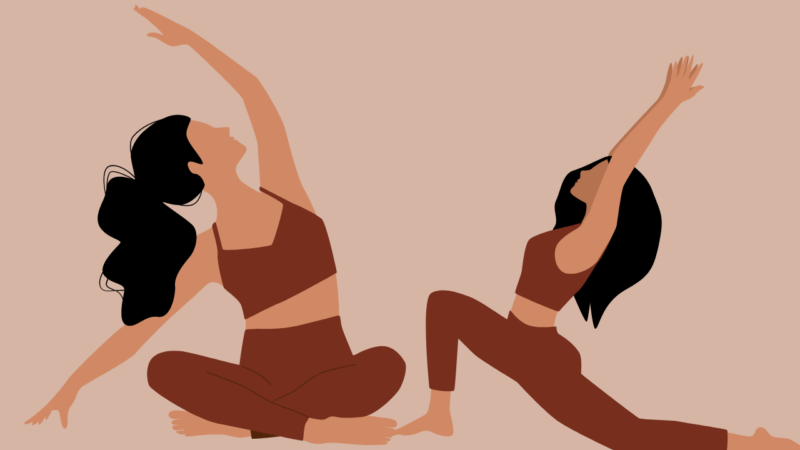Yoga is one of those things that people always talk about when discussing fitness. But is it really enough on its own to keep you in shape?
Let’s break down whether yoga can truly keep you fit and healthy on its own.
How Yoga Builds Strength and Flexibility

Let’s break it down:
Strength Benefits
It may not involve lifting weights, but certain poses build serious strength.
- Core Strength: Poses like Plank and Boat Pose challenge your core muscles. These help in stabilizing your body, which is essential for balance and injury prevention
- Upper Body Strength: Downward-Facing Dog and Chaturanga help develop strength in your arms, shoulders, and chest. Holding these poses requires endurance and muscle control.
- Lean Muscle Development: Yoga tones the body rather than building bulky muscles, giving you lean muscle mass that enhances functional fitness.
Flexibility Improvements
- Deep Stretching: Poses like Forward Fold and Seated Straddle stretch key muscle groups such as the hamstrings and lower back(Regular practice improves your range of motion over time.
- Joint Mobility: The slow, controlled movements lubricate the joints and reduce stiffness, particularly in areas prone to tightness, such as the shoulders and hips.
- Balance and Stability: Poses like Tree Pose and Eagle Pose improve your balance, which is essential for maintaining coordination as you age.
Impact on Mental Health

Reducing Stress and Anxiety
- Mind-Body Connection: It encourages mindfulness, helping you focus on your breath and present moment awareness. This reduces anxiety by shifting your attention away from stressors.
- Deep Breathing Techniques: Poses are often combined with deep breathing exercises (pranayama), which activate the body’s relaxation response and lower stress hormones.
- Cortisol Reduction: Studies have shown that practicing yoga consistently can reduce levels of cortisol, a stress hormone that contributes to anxiety and mood swings.
Improving Mood and Emotional Balance
- Endorphin Boost: Physical movement combined with deep breathing triggers the release of endorphins, the “feel-good” chemicals in the brain, which can enhance mood and alleviate feelings of depression.
- Emotional Regulation: Yoga encourages introspection and emotional awareness, allowing individuals to process difficult emotions in a healthy way. This helps in managing emotional responses during stressful situations.
- Increased Mindfulness: The practice fosters mindfulness, which is associated with greater emotional control and reduced symptoms of depression. Regular yoga practitioners often report feeling more grounded and emotionally stable.
Enhancing Sleep Quality
- Relaxation of the Nervous System: Certain poses, like Child’s Pose and Legs-Up-The-Wall, activate the parasympathetic nervous system, which calms the body and mind, making it easier to fall asleep.
- Improving Sleep Patterns: Regular practice has been shown to regulate sleep patterns and improve the overall duration and quality of sleep.
Help with Weight Loss?
Calorie Burn and Active Styles
- Power Yoga: Vigorous styles like Vinyasa and Ashtanga can burn anywhere from 400 to 600 calories per hour. These types of yoga focus on continuous movement and intense postures, which helps raise your heart rate and burn calories.
- Hot Yoga: Practicing in a heated environment, such as Bikram, can also increase calorie burn due to the intense heat, which causes your body to work harder.
- Flow Yoga: A fast-paced flow that transitions quickly between poses can also boost metabolism and encourage fat burning.
Although yoga generally doesn’t burn as many calories as running or cycling, it offers a more sustainable and mindful approach to weight management.[/su_note]
Building Muscle for Long-Term Weight Control
Here’s how yoga contributes to this:
- Core Strength: Stronger core muscles improve overall posture and stability, allowing you to engage in other physical activities more effectively.
- Increased Flexibility: Greater flexibility allows for a broader range of motion during other exercises, which can boost calorie burn over time.
Mindfulness and Its Role in Weight Management
- Mindful Eating: Yoga encourages greater awareness of your body, which can lead to better food choices and reduced emotional eating. Practicing mindfulness can help you tune in to hunger cues and avoid overeating.
- Stress Reduction: Since stress is a major contributor to weight gain, especially through emotional eating, yoga’s ability to lower cortisol levels can help control weight. Less stress means less likelihood of indulging in unhealthy eating patterns.
Is It Enough for Cardiovascular Health?

Contribution to Cardiovascular Health
- Lowering Blood Pressure: Regular practice, especially restorative forms, has been shown to reduce high blood pressure. This is largely due to yoga’s ability to lower stress levels and encourage relaxation.
- Reducing Stress: Chronic stress is a major risk factor for heart disease. Focus on mindfulness and controlled breathing reduces stress hormones like cortisol, which in turn benefits heart health.
- Improved Circulation: Poses like Downward-Facing Dog and Mountain Pose help improve blood flow and circulation, delivering oxygen more efficiently to your muscles and organs.
Does It Raise Your Heart Rate?
Here’s how different styles affect heart rate:
- Vinyasa and Power Yoga: More styles can elevate your heart rate to moderate levels. These faster-paced flows engage multiple muscle groups continuously, providing some aerobic benefit.
- Hot Yoga: Practicing in a heated room, such as with Bikram, can elevate the heart rate more significantly due to the intensity of the heat combined with the physical activity.
Combining with Other Workouts

Why You Should Combine It with Other Exercises
- Complementary Strength Training: Yoga builds lean muscle and improves core strength, but it may not provide the progressive overload needed for significant muscle growth. Adding resistance training, such as weight lifting or bodyweight exercises, can complement yoga by targeting specific muscles and promoting muscle hypertrophy.
- Cardiovascular Health: As mentioned earlier, yoga doesn’t typically offer enough aerobic activity for optimal cardiovascular health. Combining yoga with activities like running, swimming, or cycling can ensure your heart and lungs are getting the exercise they need.
- Avoiding Workout Plateaus: Adding variety to your workout routine by combining yoga with other exercises helps prevent plateauing, where progress in fitness stalls. Mixing things up can keep your body challenged, helping you avoid boredom and keep making progress.
Examples of Workout Combinations
- With Strength Training: Perform strength training on alternate days from your yoga practice. For instance, lift weights three times a week and practice yoga two to three times a week to balance flexibility and strength.
- With Running: Running builds cardiovascular endurance while yoga helps stretch and strengthen muscles used during running. This combination can reduce the risk of injury by improving mobility and range of motion.
- With HIIT (High-Intensity Interval Training): Incorporating HIIT provides intense cardiovascular benefits in a short time. After a HIIT workout, yoga can be used as a recovery session, promoting muscle relaxation and reducing soreness.
The Benefits of Practicing Regularly

Physical Benefits
- Increased Flexibility: Regular practice leads to greater flexibility, which helps in reducing muscle stiffness and improving mobility. Over time, poses like Forward Fold and Downward Dog can significantly increase your range of motion.
- Better Posture: Yoga encourages alignment and body awareness. Regular practice strengthens the muscles that support your spine, leading to better posture. This reduces the likelihood of back pain and injury.
- Enhanced Muscle Tone: Even though yoga doesn’t involve lifting weights, certain poses like Warrior and Plank help build lean muscle. Holding these positions for extended periods strengthens your arms, legs, and core.
Mental and Emotional Benefits
- Stress Reduction: One of the main reasons people practice yoga is to reduce stress. It encourages mindfulness and focuses on deep breathing, which activates the parasympathetic nervous system, helping you relax.
- Improved Mental Clarity: Regular practice can help clear mental fog, improve focus, and enhance overall cognitive function. The mindfulness aspect also helps to calm racing thoughts and promote emotional stability.
- Better Sleep: Poses like Legs-Up-The-Wall or Child’s Pose help reduce tension and prepare the body for rest.
Long-Term Benefits
- Reduced Risk of Injury: The combination of improved flexibility, balance, and strength makes you less prone to injuries, especially as you age.
- Enhanced Emotional Resilience: Regular yoga practice promotes better emotional control and helps in developing resilience against stressors. Over time, it helps individuals cope better with anxiety and emotional challenges.
- Stronger Immune System: Yoga’s focus on reducing stress has been linked to improved immune function, helping the body fight off illnesses more effectively.
FAQs
Conclusion
Yoga is an incredibly beneficial practice that supports both physical and mental health. It builds strength, improves flexibility, and promotes relaxation and mindfulness. However, relying solely on yoga may not cover all fitness needs, especially when it comes to cardiovascular training and muscle building.



